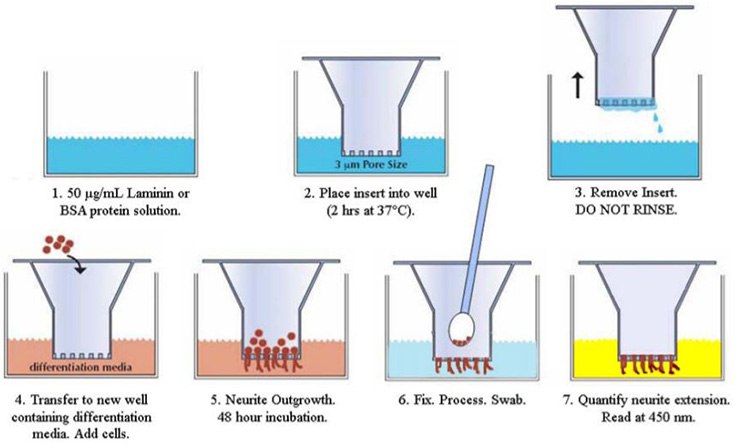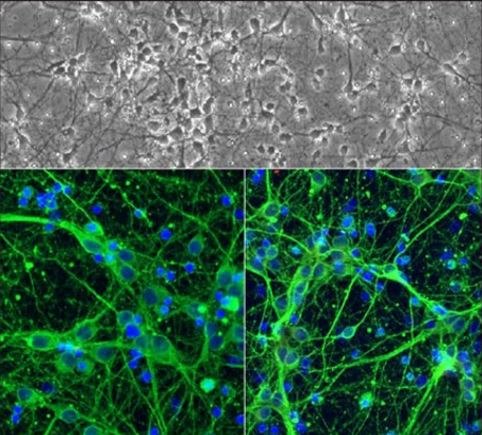Neurite Outgrowth Assays
Introduction
Neurite Outgrowth is a process wherein developing neurons produce new projections as they grow in response to guidance cues. Nerve growth factors, or neurotrophins, are one family of such stimuli that regulate neurite growth1. Dynamic neurite outgrowth during development results in the formation of a complex neuronal architecture that results in the establishment of the functional nervous system and brain2. Understanding the biology of neurite outgrowth can shed light on mechanisms underlying certain neurodegenerative diseases3. In order to investigate neurite outgrowth, researchers need an effective methods for growing neurons in culture, stimulating the cells with neurogenic compounds, such as growth factors, and monitoring the growing neurites.
In Vitro Neurite Outgrowth Assays
Neurite Outgrowth Assays have been optimized and developed for characterization and quantification of neurite formation, composition, and behavior in response to chemical agents and growth conditions. The assay technique uses Millicell® semi-porous culture inserts (1uM, 3uM) and optimized reagents to easily analyze neurite outgrowth using a common colorimetric or chemiluminescence detection.
Response not successful: Received status code 500

Figure 1. Neurite Outgrowth Assay Protocol. The assay is a simple, efficient, and versatile system for the quantitative determination of compounds that influence neurite formation and repulsion. The microporous filter allows for biochemical separation and purification of neurites and cell bodies for detailed molecular analysis of protein expression, signal transduction processes and identification of drug targets that regulate neurite outgrowth or retraction processes. With this system, it is possible to screen numerous biological and pharmacological agents simultaneously, directly evaluate adhesion and guidance receptor functions responsible for neurite extension and repulsion, as well as analyze gene function in transfected cells.
Common Neural Markers

Figure 4.Neuron
References
To continue reading please sign in or create an account.
Don't Have An Account?